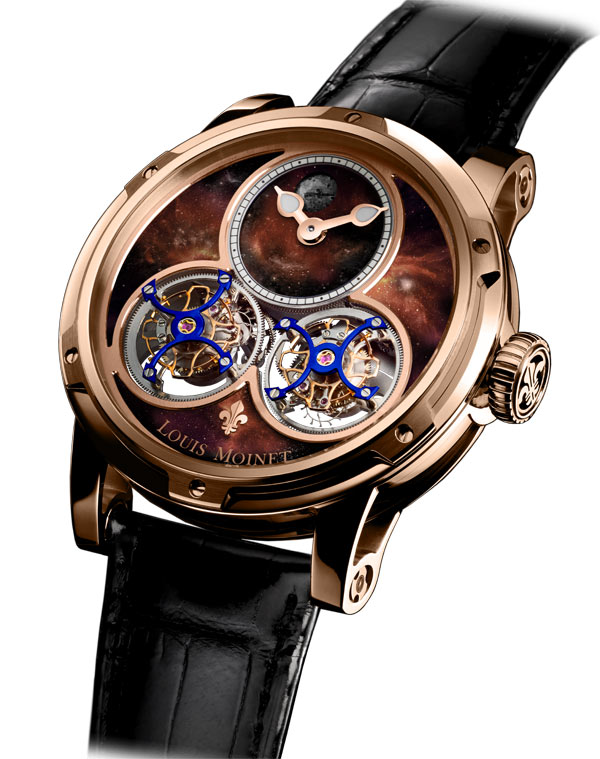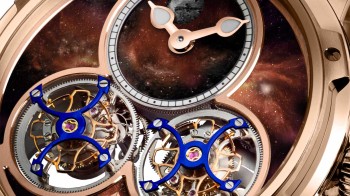This new Sideralis boasts a distinctive red aventurine caseback. Aventurine is the product of an experiment by a seventeenth-century glass worker, who dipped copper flakes into molten glass. The constellation of sparkling particles produced a beautiful effect – and aventurine was born.
Red aventurine, however, is far less well-known than its blue counterpart. That makes it especially appropriate for this very limited edition of eight Sideralis watches. Its reddish-brown hues form a heavenly background, hand-painted to resemble the outer reaches of the kind of distant galaxy Louis Moinet himself loved to explore during his astronomical observations.
The time dial, situated at 12 o’clock, comprises two discs, one atop the other. The upper disc is also made from red aventurine. It completes one counter-clockwise rotation every 60 seconds and has a circular opening through which the three planets painted on the lower disc can be glimpsed: Mars, the Moon, and Mercury, each of the micro-paintings including genuine dust from the heavenly body in question.

From a technical point of view, the highlight is the Double Tourbillon. This movement, first unveiled less than two years ago, is a Louis Moinet exclusive. Both the tourbillons are oversized, with cages measuring 14.9 mm – half as big again as the average, resulting in the largest assembly of two tourbillons ever to have existed. They are designed to be physically above the movement – above the dial, even. The two raised cages are large as life and wholly visible, revealing balance wheels with beautifully styled screws – and an absolutely incomparable aesthetic appearance. Moreover, the tourbillons rotate in opposite directions. The continuous coming and going, side by side, is not just for stylistic reasons; the counter-rotation provides the motive power required for the star mechanism – the Sideralis complication – located at twelve o’clock.






